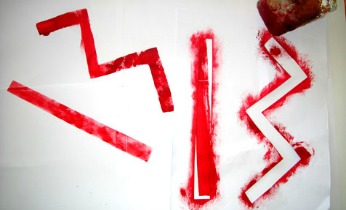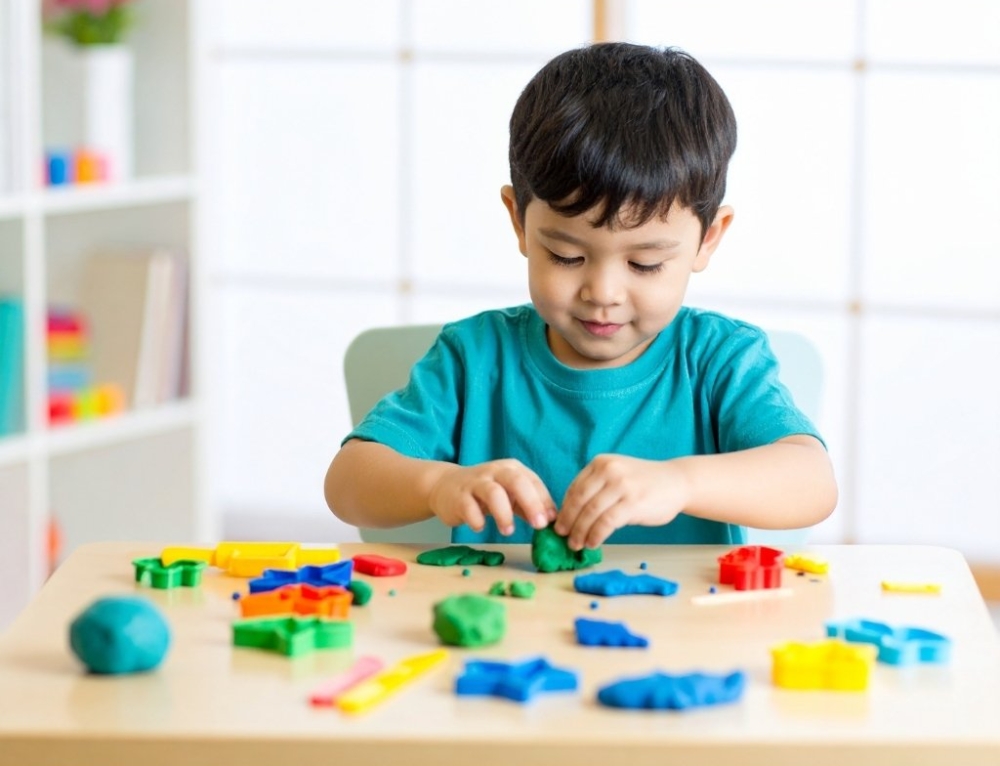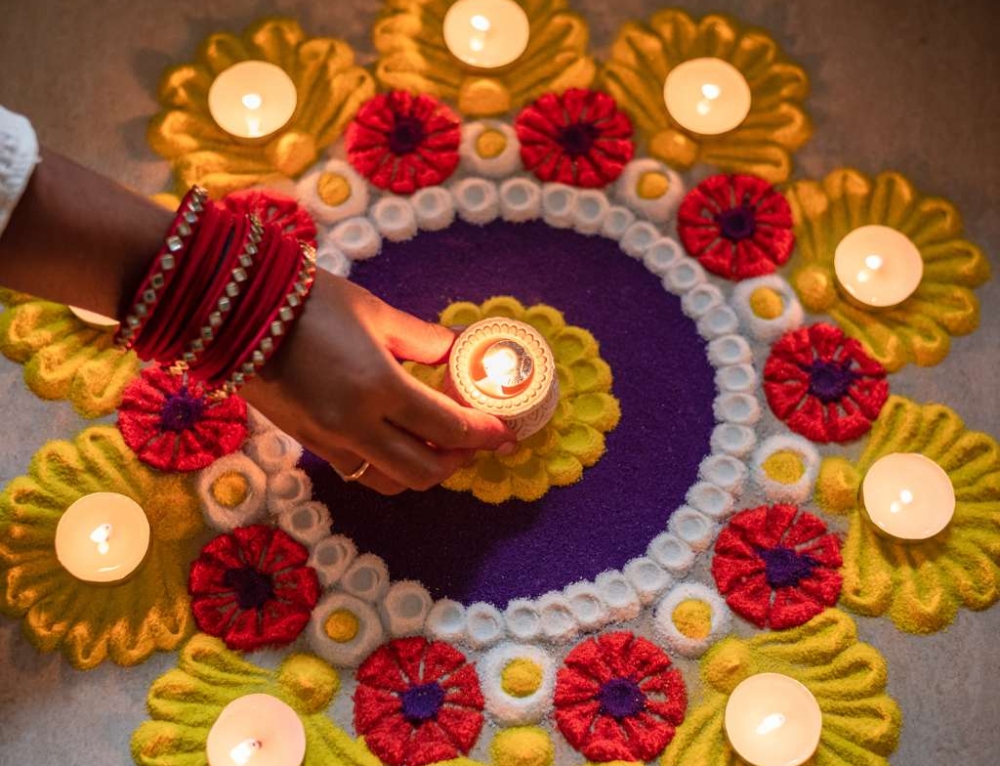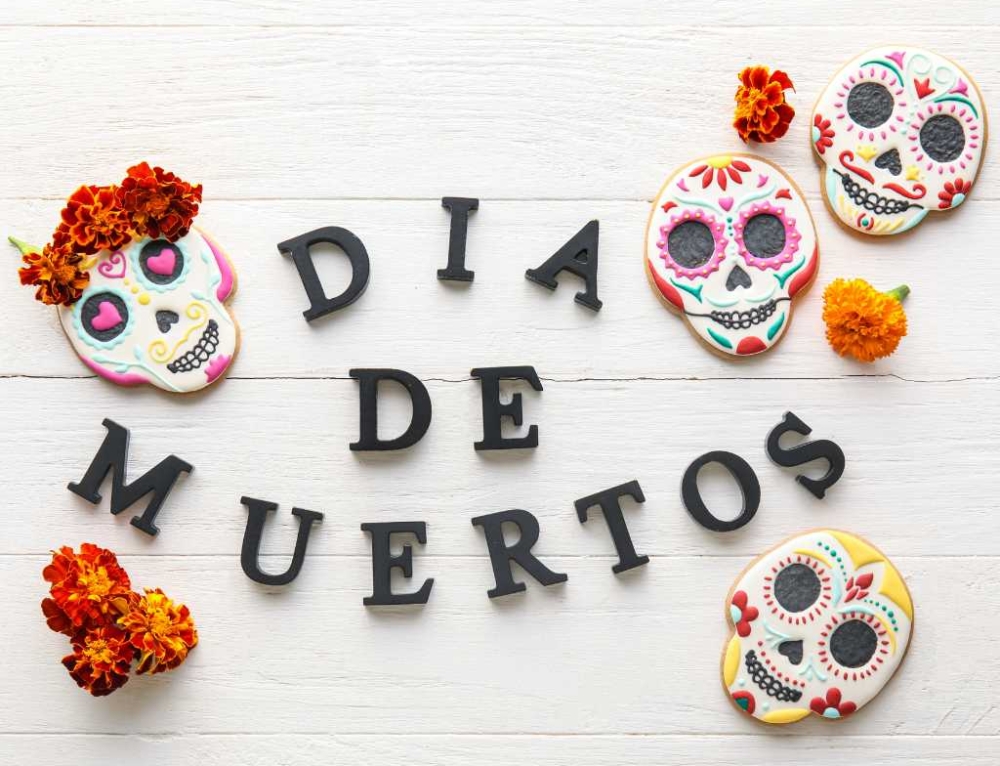Create your own stencils
Create some simple shapes or busy artwork with this stencil creation activity. You may choose to stencil lines, zigzags or shapes of any kind. The more you create, they more you paint.
What you need:
- A4 sheet of cardboard or card
- A3 paper or butcher’s paper
- paint
- paint dishes
- roller sponge or sponge
- scissors
- pencil
- newspaper
- Blu Tack
Number of players:
1+
Activity:
Using the pencil draw a long rectangle onto the card (extra long and about 2cms wide).
Next to it draw a long 2cm wide zigzag.
This page will be the framework for the stencil.
Using scissors, cut out the long skinny rectangular shape from the framework – this is the inside shape that you are removing – making sure you keep the frame intact.
Do the same with the zigzag shape.
You should now have an A4 page that has two shapes cut out from it: a long skinny rectangle and a long zigzag.
Lay newspaper on your workspace.
Pour the paint your child will use to fill in their stencil into a paint dish.
Place the A3 page down onto the newspaper.
Press a few small pieces of Blu Tack onto the back of the stencil framework and lay it on top of the A3 page – making sure the Blu Tack holds the stencil in place.
Next lightly dip your sponge into the paint and then dab onto the stencil, covering the skinny rectangle and zigzag in paint.
Once covered remove the stencil carefully so as not to smudge the paint.
The A3 page will now have a brightly painted line and zigzag on it.
Repeat this process until the page is filled with lines and zigzags.
Once dry you may want to repeat the stencilling on top with a lighter colour to create a busier artwork.
Notes:
- You can use paintbrushes if you don’t have a sponge or sponge roller. An old kitchen or bath sponge is ideal.
- The floor may be a suitable place to work as these are large artworks that require plenty of working space.
- It is easier to stick to one or two different colours when printing or stencilling. The simple stencils are the most effective. You may want to do a couple of stencil prints for your child so that they understand how the process is undertaken.
- Careful not to put too much paint onto your sponge when printing, it is better to under do it rather than over do it.
- A spontaneous design rather than an organised one will be more rewarding for younger children to create. Older children will be more interested in creating organised patterns and repetitions.
- Your child can make numerous creations that can be used as wrapping paper. This provides them with the opportunity to be proud artists when the gift is given to a loved one.







Leave A Comment
You must be logged in to post a comment.